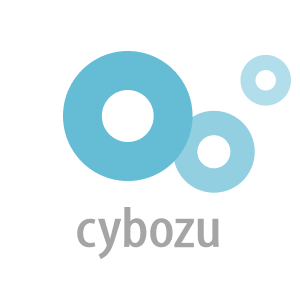Updated September 24, 2025
How To Study For The JLPT
Thinking of taking the JLPT (Japanese-Language Proficiency Test)?
Looking for tips on how to study effectively and maximize your chances of passing? Well then you're in the right place. We’ve been there, and we've done that. So we get it — you’re nervous about the exam and you want to set your mind at east. That’s why we took it upon ourselves to create this detailed JLPT guide.
In this article: 📝
The JLPT is not for everyone, but a lot of people may need it when they work, study, or settle down in Japan. Trust us, we know that studying for the JLPT can be a pain! To help you get through it, we've gathered all the resources you’ll need.
From the test’s background to what you should study for the JLPT, we've got you covered. We'll provide details about JLPT levels, sections, and how to get advantages.
What is the JLPT?
The Japanese-Language Proficiency Test (日本語能力試験) is a standardized exam that evaluates a non-native Japanese speaker’s skills in the Japanese language. It’s the Japanese version of TOEIC or TOEFL.
Coordinated by the Japanese Ministry of Education and the Japan Educational Exchange and Services (JEES), JLPT was first held in 1984. Applicants could only take the exam once a year until 2009, when it began being administered twice annually.
The diversity of the test-takers keeps on growing every year. In fact, there were 790,000 examinees from 82 countries in December 2024! This is why the JLPT is focused on communication abilities and is machine-scored, maintaining the fairness and accuracy of the exam’s results.
Since the JLPT is a common and reliable tool to indicate a person’s Japanese skills, it is widely-recognized among businesses, companies, and universities in Japan. If you want to study or work in the country, having a JLPT certificate will be very advantageous!
Now that you’re caught up with the JLPT’s background, it’s time to start your preparation for it. The first step is to know which level is fit for you. Read on to find out about what each JLPT level means and what skills are needed to pass it.
What are the JLPT levels?
There are 5 JLPT levels. The beginner levels, N4 and N5, are focused on basic Japanese knowledge. Levels N1 and N2 are the more difficult ones, measuring skills on understanding broad-range Japanese. N3 is the bridge between these levels.
Here is a more specific explanation for each exam level that will help you determine which suits your capabilities and skills.
N5
Starting with the most basic level, N5 is the easiest JLPT you can take. This level measures your understanding of some basic Japanese characters, words, and sentences. Despite it being the least difficult, it does not mean you can take it without preparation.
For the reading part, expect common expressions and sentences. These are all written in hiragana, katakana, and basic kanji, so familiarize yourself with those. In listening, be familiar with short daily conversations and classroom situations.
N4
This is the second easiest JLPT level. N4 gauges your understanding of basic Japanese. This is a bit challenging compared to N5, so be sure to study deeper Japanese words and more complex kanji.
In reading, you can expect short passages about typical daily topics. It will also be written in basic vocabulary and kanji. For the listening part, you’ll encounter longer conversations than in N5, but still spoken slowly.
N3
This is the moderate mode. N3 is quite fluent – if you manage to pass this level, having long daily Japanese conversations won’t be a hassle for you. This is not as easy as N4 and N5, but not as hard as N2 and N1.
Expect more specific everyday topics and slightly complex passages in the reading part. The listening section can contain conversations spoken at almost-natural speed, so be sure to listen intently to grasp the relationships and main points presented in the audio.
N2
The difficult level starts here. An N2 JLPT certificate can already get you into some companies and universities because this is extremely close to being fluent in Japanese. Of course, the exam is considerably harder compared to the earlier levels.
The reading part may consist of materials from newspapers (commentaries) and magazines (short critiques). In the listening section, you’ll encounter long conversations and news reports spoken at near-natural speed.
N1
This is the final boss. If you are able to pass this level, there is no doubt you’ll be prepared to work or live in Japan. N1 measures your fluency in Japanese by assessing your skill in using it in various circumstances. This is a very complex test that requires a lot of preparation.
In the reading part, you’ll have full-length editorials and critiques to read. Expect conversations, lectures, and news reports spoken at natural speed for the listening part. It’s important that you thoroughly comprehend the structure and content of all materials.
Since the reading materials and the questionnaire itself will be in kanji, hiragana, and katakana, you need to practice a lot. To help you, we've estimated how many kanji characters you need to know for each level. It’s good to learn more than what’s stated here, though!
| Level | Number of Kanji |
| N5 | 100 |
| N4 | 300 |
| N3 | 650 |
| N2 | 1000 |
| N1 | 2000 |
Seems daunting? Don’t worry, you don’t have to perfect the exam to be certified. The table below shows the score you need to get to pass each level.
| Level | Range of scores | Score you need to pass |
| N5 | 0 ~ 180 points | At least 80 points |
| N4 | 0 ~ 180 points | At least 90 points |
| N3 | 0 ~ 180 points | At least 95 points |
| N2 | 0 ~ 180 points | At least 90 points |
| N1 | 0 ~ 180 points | At least 100 points |
So… what JLPT level is fluent?
According to Japan Times (2013), N1 is the standard when it comes to fluency. N2 is called business-level, the minimum level requirement of companies to hire foreigners. N3 is enough to get you through casual and slightly complex conversations.
Since N4 and N5 are beginner levels, they are not enough to attract the attention of Japanese companies. However, being certified in these levels does give the impression of attempting to learn the language which is sufficient for some employers.
What’s inside the JLPT?
Knowing the type of exam you’ll take greatly helps in preparing for it. It’s important to keep in mind that the JLPT does not only use one type of test throughout – each part of the exam has different directions on how to answer. The JLPT can be full of surprises!
According to the JLPT website, only 276,406 (35%) out of 790,536 JLPT examinees in December 2024 got certified. If that scares you, don’t worry! We’ll give you the information you need to know about each exam component so you can be fully ready for anything.

The JLPT gauges your Japanese language proficiency through your reading skills, listening abilities, grammar knowledge, and vocabulary size. And yes, the exam will not directly test your speaking or writing skills, but it’s best if you also hone that.
Reading
This part of the JLPT solely relies on how well your reading comprehension is. You will be asked to read a passage then answer some questions about it. The following are the types of reading tests you might encounter in the JLPT:
- Comprehension of short, medium, and/or long passages - the length and difficulty of the passages vary depending on the exam level you will take.
- Information retrieval - analyzation and extracting important information from graphs, charts, advertisements, or notices.
- Integrated comprehension - you will answer questions about similarities and differences of opinions expressed between two passages. This type appears only in N1 and N2 exam levels.
- Thematic comprehension - you will be given a long passage followed by questions about its overall idea. This type also only appears in N1 and N2 exam levels. Protip: skim through the passage then answer the questions that follow so that you won’t waste time!
Our best reading tip: Watch the time. There is no extra time at the end to fill in remaining answers if you don't finish. So if you're stuck on a hard passage, it might be better to just guess and move on to the next one. And make sure you at least fill out every answer (even if you're just choosing randomly) — it's better than nothing.
Listening
Every component of the JLPT needs focus and alertness, but this one requires it the most. The questions will come at you like machine gun shots – one after another, despite your preparedness to answer the questions.
- Task-based comprehension - a description of the situation will be given followed by a conversation.
- Comprehension of key points - a bit similar to the first one, but the conversation is longer and requires you to spot the small details.
- Quick response - this is the fastest type of listening test. You will be asked to choose the best answer to the sentence presented. Again, the answers are spoken.
- Comprehension of general outline - a simple description will be given, followed by a long conversation or monologue. The answers are also spoken, so be sure to listen closely. This type only appears in N1, N2, and N3 exam levels.
- Verbal expressions - quick questions which ask you to choose the phrase/s that match the situation presented. This type appears in N3, N4, and N5 exam levels, but the answers are also spoken and not on the answer sheet.
- Integrated comprehension - you will listen to long conversations then answer multiple questions about it. This type of test appears only in N1 and N2 exam levels. Protip: take notes during the conversation so you won’t forget the important details when answering the questions!
Our best listening tip: Take notes! When you hear something that disqualifies one of the answers, mark it as disqualified and then choose from the remaining possibilities.
Grammar
This part only takes a bit of the exam, usually only having around 5 questions. Nevertheless, those are still precious points to earn, so be sure to master grammar rules! The test types you might encounter in this section are:
- Selecting grammar form - you have to fill in the blank in the given sentence by choosing the appropriate grammar form.
- Sentence composition - rearrange the blanks in the sentence to form a cohesive thought.
- Text grammar - complete the blanks in the passage by choosing the correct grammatical phrases.
Vocabulary
This exam part includes your knowledge of kanji. Aside from memorizing Japanese words, it’s important that you remember the kanji for it as well! Each JLPT level, after all, requires kanji knowledge. The vocabulary section might utilize these types of test:
- Kanji reading - you will need to choose the appropriate reading for the underlined kanji character in the sentence.
- Orthography - similar to the first type, but the underlined word is written in hiragana. This appears on all JLPT exam levels except N1.
- Word formation - you will fill in the blank by choosing what matches with the revealed half of the blank, usually creating a word composed of 3-5 kanji characters. This type only appears in N2 exam level.
- Contextually-defined expressions - this is the one with the simplest direction: fill in the missing word in a sentence. However, you should understand the context before picking the answer because several words might fit the sentence.
- Paraphrases - choose the word or phrase with the same meaning to best replace the underlined in the sentence.
- Usage - you will be given a word and asked to choose the sentence that best matches it.
Each test section in the JLPT is time-limited! You don’t get to mull over questions as much as you like, so be quick and smart in answering. The table below contains the usual time allotment for each component.
| Exam Level | Test Section and Time Alloted | |
| Language Knowledge | Reading | Listening | |
| N5 | 20 minutes (Vocabulary)
40 minutes (Grammar, Reading) |
30 minutes |
| N4 | 25 minutes (Vocabulary)
55 minutes (Grammar, Reading) |
35 minutes |
| N3 | 30 minutes (Vocabulary)
70 minutes (Grammar, Reading) |
40 minutes |
| N2 | 105 minutes | 50 minutes |
| N1 | 110 minutes | 60 minutes |
How many hours should I study for the JLPT?
Given the wide coverage of the test items as well as the time limitations, the preparation time for the JLPT is significant to your chances of passing. Here is an estimate of how long it takes to study for each JLPT level according to Coto Academy (2025).
| Exam level | Hours needed to study | |
| With kanji knowledge | Without kanji knowledge | |
| N5 | 350 hours | 400 - 500 hours |
| N4 | 550 hours | 800 - 1,000 hours |
| N3 | 900 hours | 1,325 hours |
| N2 | 1,500 hours | 2,200 hours |
| N1 | 2,150 hours | 3,900 - 4,500 hours |
With all this information that you have about the JLPT, its content, and how it's administered, we hope that you’ll be able to plan your study routine better. If you want to know about the advantages of having a JLPT certificate, read the next section!
Advantages of taking the JLPT
We’ll be honest – unless you are planning to work or study in Japan, there is no significant gain in having a JLPT certification. However, if you are planning to do those things or even settle down in the country, taking the JLPT can be helpful.
For one thing, it's a great way to monitor your own skills. It also gives you a concrete deadline that can help keep you motivated — after all you won't want to fail the test. And that will keep you motivated.

Here are 5 advantages you can get if you have a JLPT certificate.
- More employment opportunities - a JLPT certification is not a requisite, but it is a huge help to have one when applying to Japanese companies. Especially if you’re certified in levels N3, N2, and/or N1, your CV will surely be attractive!
If you are vying for jobs related to language such as translation, teaching, or tour guiding, your employer might require you to have a JLPT certification.
- Able to get a medical practice license - if you want to practice medicine in Japan, you will need a JLPT N1 certificate. This ensures that you are knowledgeable in the field’s jargons and can communicate well with the patients and staff.
For more information, you can refer to Japan’s Ministry of Health, Labor, and Welfare.
- Addition to school applications - pretty similar to job opportunities, having a JLPT certificate sure is a nice plus in your university application as an exchange student. Some universities don’t require JLPT certifications, though.
Be sure to check with the educational institution you are interested in whether they require a certain JLPT certification or not.
Earn academic credits - the Japanese language test for the completion of junior high school is waived if the foreign student is JLPT N1 or N2 certified. Check Japan’s Ministry of Education, Culture, Sports, Science, and Technology for more information.
Help in migrating to Japan - Under the Japanese government’s “Point-based Preferential Immigration Treatment System for Highly Skilled Foreign Professionals”, you can earn points to help you migrate to the country.
JLPT N1 passers will receive 15 points while N2 passers will get 10 points. Those who have 70 points or higher are guaranteed to have preferential treatment at immigration. Head to Immigration Bureau of Japan for more details.
We believe this is one of the best reasons to take the JLPT.
How much does the JLPT cost?
Here is one disadvantage of taking the JLPT: it costs money. The exam fee is not fixed either — it varies depending on the location of your testing center and the level you’re going to take. Make sure to check the exam fees of JLPT testing centers near you!
In Japan, the JLPT usually costs around ¥5000 per level. Fees in American JLPT testing centers may cost around $100 per exam level, according to the American Association of Teachers of Japan.
How Should I Study for the JLPT?
After the exhaustive information we have given you about the JLPT, we’re finally giving you the secrets to passing (or even acing!) the exam. Here are five tips you should take note of to be 100% prepared for the JLPT!

Have an organized, healthy routine
Yes, your overall daily routine should be overhauled! Aside from dedicating a substantial amount of time for studying the language, make sure you have a proper diet and enough sleep.
Having a balanced and healthy daily routine increases your focus and sharpens your mind. Instead of using your phone before and after waking up, review your notes first. This helps in remembering what you studied!
Use various Japanese learning tools
Aside from books, there are websites dedicated to help you achieve proficiency in the language! We have gathered the best tools for learning Japanese to help you find reliable sources.
Famous Japanese language books are Shin Kanzen Master and Nihongo Sou Matome, which are must-have book collections for JLPT takers. They contain explanations and practice exercises to hone your Japanese skills.
Take mock JLPT exams
There’s a lot of mock exams available online! TestMocks and Nihongo Master are examples of websites that you can try taking mock JLPTs on.
Before taking mock exams, you can try watching some supplementary lessons from JapanesePod101 or Japanese from Zero.
Learn about Japanese culture
For you to be fluent, you need to immerse yourself in the country’s culture. There are no specific questions about it in the exam, but some questions, words, and sentences may be connected to it.
This can help you better understand the context of words and can assist in remembering the meaning behind kanji characters. You can watch some of That Japanese Man Yuta’s videos to learn about Japanese culture.
Hire a tutor This is an option for those who are having a hard time studying on their own. A tutor can give you a specific schedule to follow and can adapt to your level of knowledge. They can also give you reliable information compared to those found online.
You’re almost all set for the JLPT – but wait, when and where is the battle going to be?
Where and When to take the JLPT
According to the official website of JLPT, you may take the exam either in July or December in Japan. However, other countries may hold the exam only in July or December. You can check the List of Overseas Test Sites to see your city’s schedule.
Go and take the JLPT!
The JLPT can be tough, but it is not something you can’t conquer! With adequate preparation, you’ll surely acquire the certification you need. Besides, you will reap several benefits from it.

Whether you’re in it for the CV enhancement, the university application boost, or the immigration merit, the JLPT will surely give you a big advantage. It’s a ticket to exciting destinations and a key to numerous doors of opportunity in the land of the rising sun!
Get Job Alerts
Sign up for our newsletter to get hand-picked tech jobs in Japan – straight to your inbox.









